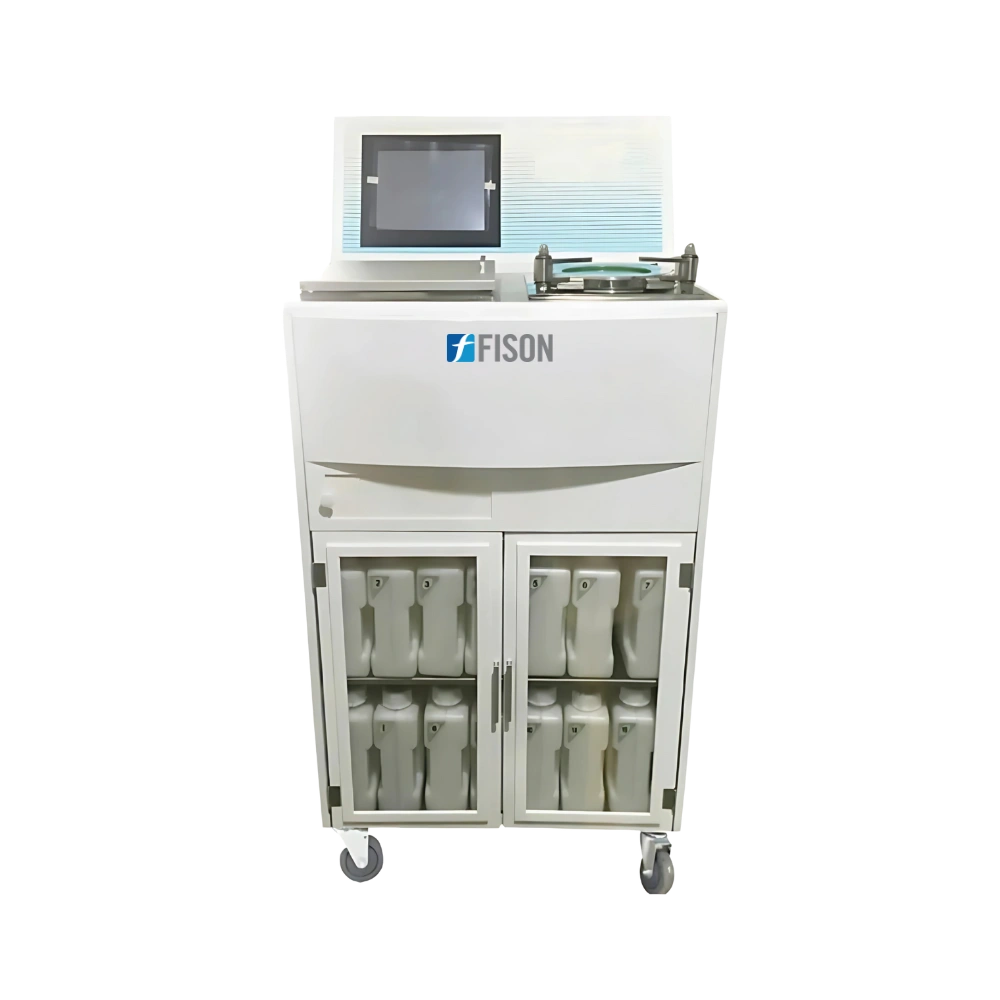
Vacuum Tissue Processor FM-TPR-B100
Vacuum Tissue Processor FM-TPR-B100 is engineered with a 2.3L capacity. It has a fully automated tissue processing system. It can process 126 tissue specimens each time. It has sealed processing chambers and multimode operations ensure optimal preservation. Ideal for modern clinical and research laboratories.
$14,438.00
Specifications
| Reagent Bottle Capacity | 2.3L |
| cassettes | 100 |
| Reagent Bottle | 10 |
| Cleaning Bottle | 2 |
| Wax Cylinder | 3 |
| Processing Cylinder Capacity | 3.8L(100 cassettes) |
| Processing Capacity | 126 cassettes |
| Wax Cylinder Volume | 2.6L(100cassettes) |
| Reagent Temperature | 30°C to 65°C |
| Wax Tank Temperature | 50°C to 70°C |
| Stirring Time | 0 to 5 minutes |
| Stirring Time Interval | 10 minutes |
| Run Modes | Manual/ Auto |
| Display | LCD touchscreen |
| Scheduling Function | Up to 15 day programmable automatic start |
| Input Power | 1000W |
| Power Supply | 220V, 50Hz |
| Dimensions(L× W× H ) | 550×600×1180mm |
| Net Weight | 98kg |
| Gross Weight | 130 kg |
Features
- Fully sealed system
- Multi-mode processing: heating, vacuum, pressure
- Large-capacity reagent and wax tanks
- Over-temperature protection
- Accurate liquid/gas circuit system
- High-efficiency software
Applications
- Our Vacuum Tissue Processor FM-TPR-B100 is ideal for use in histopathology labs, pathology departments, hospitals, research institutions, and diagnostic centers requiring high-throughput, precision tissue processing with safety and automation. Its precise programmable features support the safe and consistent preparation of tissue specimens.
Accessories
Accessory Quantity Tissue Basket 1pcs Reagent Bottles 17pcs Fuse(10A) 2pcs Power Line 1 Line
Accessories Optional
Vacuum system, Pressure sensor, Temp sensor
Frequently Asked Question
1: What is the processing capacity of Tissue Processor FM-TPR-B100?
Tissue Processor FM-TPR-B100 supports processing of 126 tissue cassettes per cycle, depending on the selected model.
2: Can Tissue Processor FM-TPR-B100 operate automatically?
Yes, Tissue Processor FM-TPR-B100 features both manual and fully automatic operation modes. It also supports scheduled operation up to 15 days in advance. Perfect for overnight or unattended processing.
3: How does the fully sealed system improve tissue-processing outcomes?
The sealed system prevents air exposure, minimizing reagent evaporation and oxidation. This maintains reagent concentration and sample integrity throughout the process. It also reduces contamination risk and ensures consistent conditions for all cassettes.
4: Why is multi-mode processing (heating, vacuum, pressure) important?
Different tissue types respond better to specific processing environments. Vacuum helps in reagent infiltration, pressure assists in paraffin penetration, and heating promotes diffusion. These modes can be combine to reduce artefacts and improve dehydration efficiency.
5: What makes the reagent exchange system safer than traditional cylinder-based systems?
Tissue Processor FM-TPR-B100 uses an internal sealed fluid exchange system that does not rely on external cylinder swaps. This eliminates risks of leaks, air bubbles, or mechanical jamming during fluid changes. The result is smoother reagent transition, reduced tissue damage.